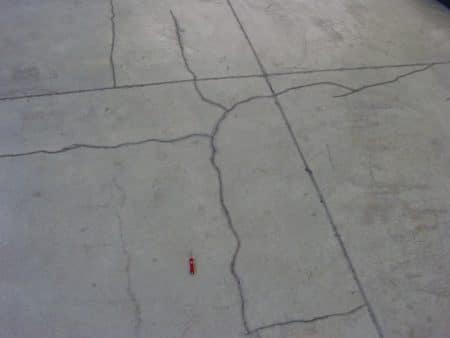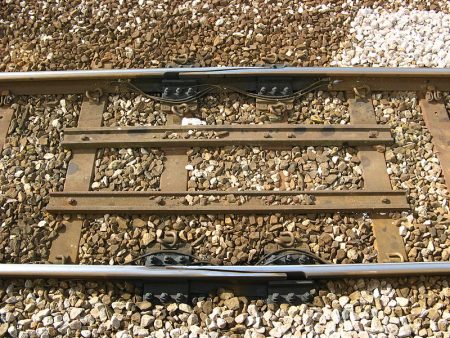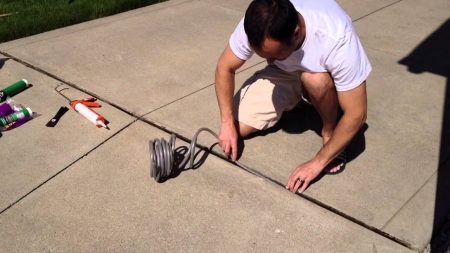Expansion Joint in Concrete – Types and Characteristics
Expansion joints are placed in concrete to prevent expansive cracks formed due to temperature change. Concrete undergoes expansion due to high temperature when in a confined boundary which leads to cracks.
Expansion joints are provided in slabs, pavements, buildings, bridges, sidewalks, railway tracks, piping systems, ships, and other structures.
This article emphases on need of expansion joint in concrete, characteristics of expansion joints, types of expansion joint and installation of expansion joints.

Need of Expansion Joint in Concrete
Concrete is not an elastic substance, and therefore it does not bend or stretch without failure. However, concrete moves during expansion and shrinkage, due to which the structural elements shift slightly.
To prevent harmful effects due to concrete movement, several expansion joints are incorporated in concrete construction, including foundations, walls, roof expansion joints, and paving slabs.
These joints need to be carefully designed, located, and installed. If a slab is positioned continuously on surfaces exceeding one face, an expansion joint will be necessary to reduce stresses. Concrete sealer may be used for the filling of gaps produced by cracks.
Characteristics ofExpansion Joints
- Expansion joints permits thermal contraction and expansion without inducing stresses into the elements.
- An expansion joint is designed to absorb safely the expansion and contraction of several construction materials, absorb vibrations, and permit soil movements due to earthquakes or ground settlement.
- The expansion joints are normally located between sections of bridges, paving slabs, railway tracks, and piping systems.
- The expansion joints are incorporated to endure the stresses.
- An expansion joint is simply a disconnection between segments of the same materials.
- In the concrete block construction, the expansion joints are expressed as control joints.
Types of Expansion Joint
Based on the location of joint, expansion joints are divided into following types,
1. Bridge Expansion Joint
Bridge expansion joints are designed to allow for continuous traffic between structures while accommodating movement, shrinkage, and temperature variations on reinforced and prestressed concrete, composite, and steel structures.

2. Masonry Expansion Joint
Clay bricks expand as they absorb heat and moisture. This places compression stress on the bricks and mortar, encouraging bulging or flaking. A joint replacing mortar with elastomeric sealant will absorb the compressive forces without damage.
3. Railway Expansion Joints
Usually, expansion joints are not provided in the railways tracks, but if the track is laid on a bridge having expansion joint, providing a expansion joint in the track becomes mandatory to mitigate the expansion in base concrete structure.

4. Pipe Expansion Joints
Pipe expansion joints are necessary in systems that convey high temperature substances such as steam or exhaust gases, or to absorb movement and vibration.
Based on the type of material used in making of joint, expansion joints are further classified into following types,
- Rubber expansion joint
- Fabric expansion joint
- Metal expansion joint
- Toroidal expansion joint
- Gimbal expansion joint
- Universal expansion joint
- In-line expansion joint
- Refractory lined expansion joint

Installation of Expansion Joints
The depth of an expansion joint is usually one fourth of the slab thickness, or more if necessary. The expansion joint gap depends on the type of slab, like floating slab floor, vehicle pavement, sidewalk, or monolithic slab foundation. It is also influenced by the slab dimensions, type of concrete, and the reinforcing materials being used.
Cracks in concrete may occur at the expansion joints due to improper concrete mix or curing. These conditions cause shrinkage between the expansion joints and cracks can be formed.
1. Pre-Concrete Installation
When the site is prepared for the concrete pouring and the provisioning of the expansion joints in slabs are made prior to the placing of concrete. An individual expansion joint is created by the insertion of a flexible material that runs along the joint length.
2. After Concrete Installation
Once the concrete is set, suitable tools are used for making grooves in the poured concrete for placing of the joint materials.

Lot of thanks for providing such information about expansion joint services. thank you very much.
ReplyDeleteReally I feel happy to see this useful blog, Thanks for sharing such a nice blog.
ReplyDeleteExpansion Joint
I am a regular reader of your blog, Amazing content with proper examples. Thank you admin Our Expansion Joint covers are backed by over 50 years of expertise to provide the right amount of movement, fire and wind protection with lasting
ReplyDeleteNice blog...Water Proofing Services in Chennai
ReplyDeleteExpansion Joints Services in Chennai
Building Repair and Maintenance System in Chennai
On the off chance that this is anything but a reasonable choice, call up the neighborhood business index and assemble a rundown of contacts for project workers who work inside the area. concrete patios columbia
ReplyDeleteWe are really grateful for your blog post. You will find a lot of approaches after visiting your post. I was exactly searching for. Thanks for such post and please keep it up. Great work. how to treat concrete cancer
ReplyDeleteThis is nice blog. Thanks admin for share this post. This is helpful for Bridge Engineers. And also you may follow the links to know more :
ReplyDeleteExpansion joint types, defect, cause and prevention etc. describe here